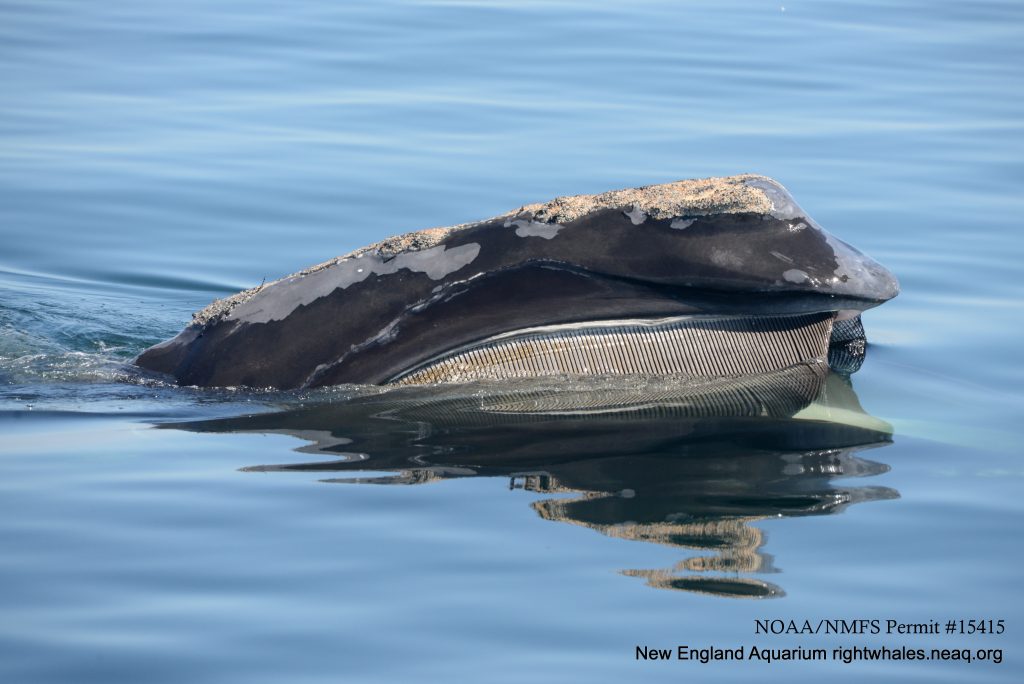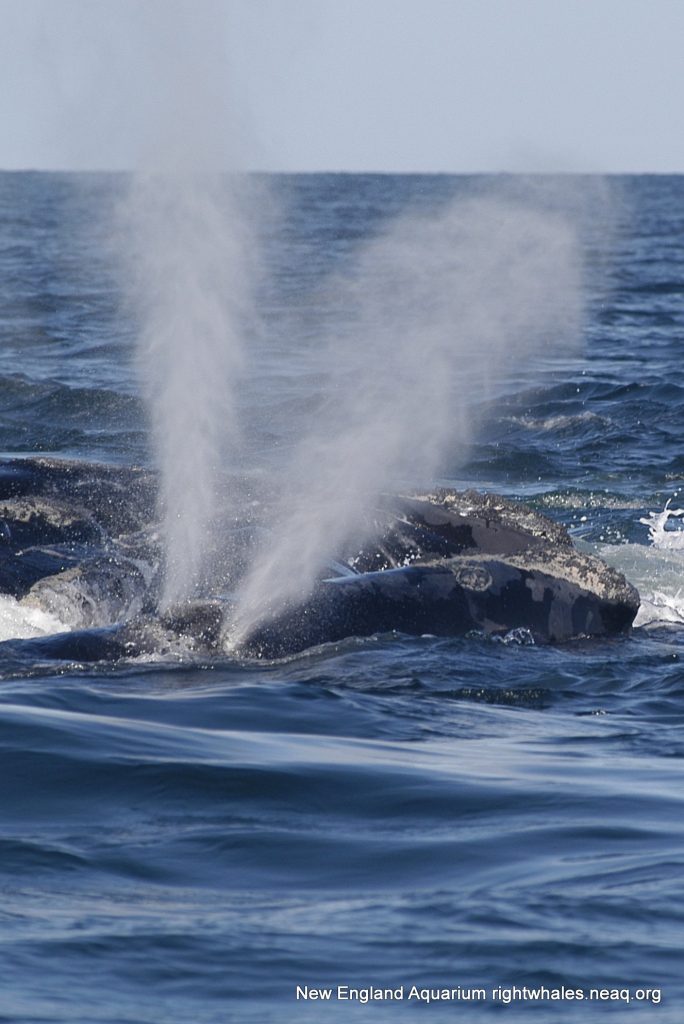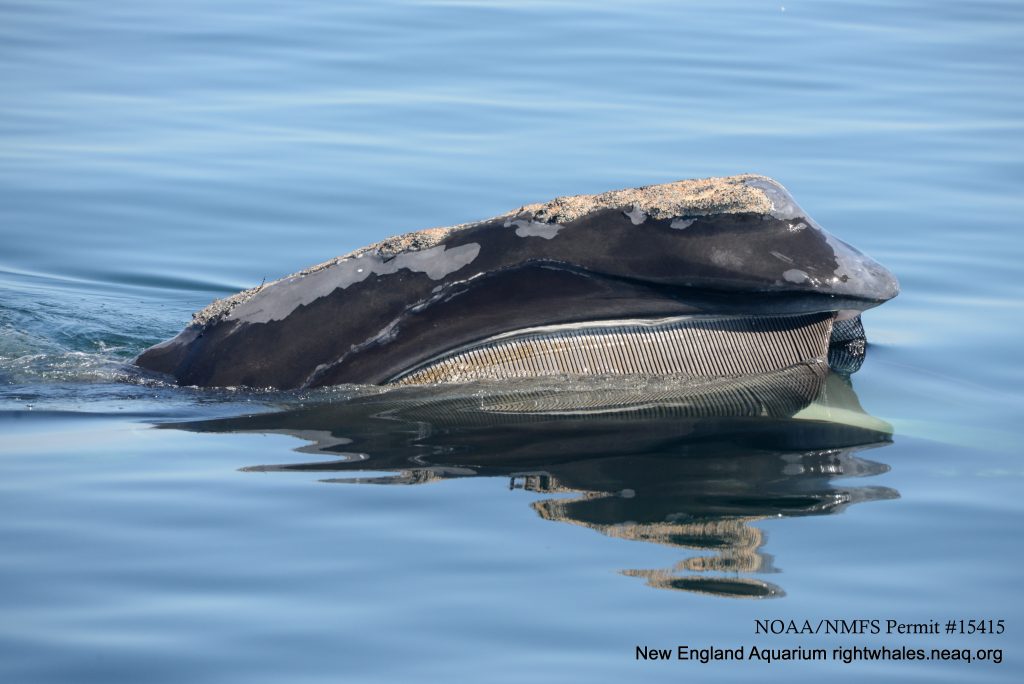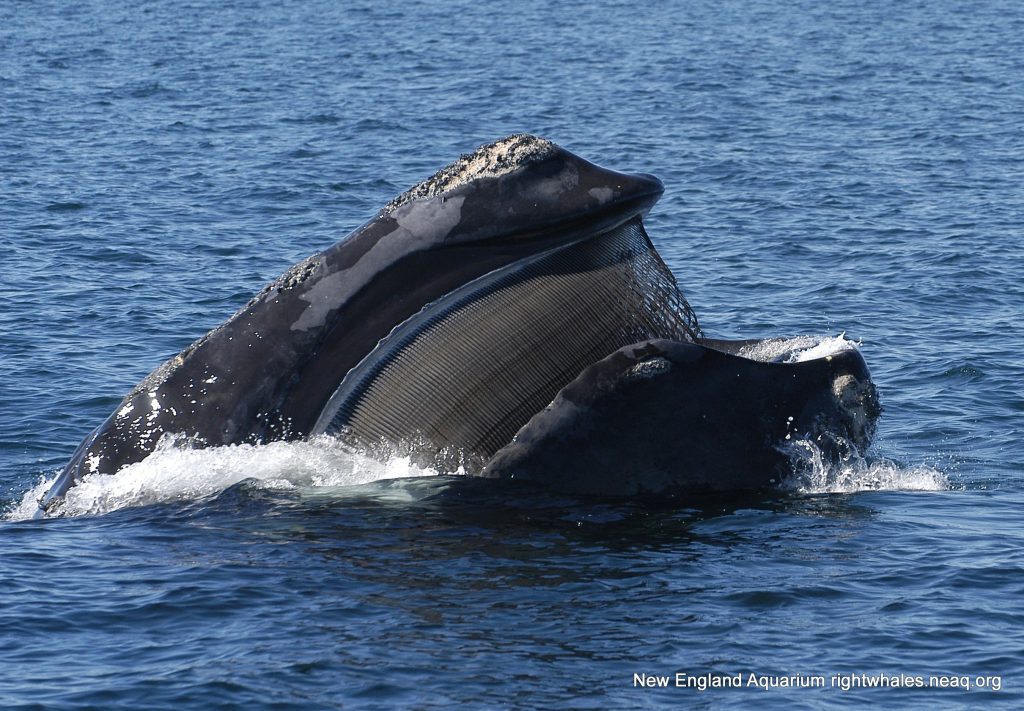




Scientific name
Eubalaena glacialis
Where does it get its name?
During commercial whaling, right whales were considered the “right” whale to kill. Not only were they slow, but would float when killed.
Whale SENSE Region Found:
ATLANTIC

Protection status
Endangered Species act
- Endangered throughout its range
- It is illegal to approach a right whale within 500 yards.
- Today only about 360 individuals exist.
Protected throughout its range
Where to watch:
Nearshore and open ocean. Right whales spend most of their lives within 50 miles of the coast.
What to watch for:
Blow: V-shaped blow
Diving: Typically flukes (lifts its tail out of the water) prior to a deep dive

Body: Right whales’ bodies are mostly dark and round, with paddle-shaped pectoral fins. Their characteristic feature is raised patches of rough skin, called callosities, on their heads, which appear white because of whale lice (cyamids).
Size: Length: 45 – 55 feet, Weight: Up to 70 tons

Feeding
Right whales primarily feed during the spring and summer months in higher latitudes. They will often be found skim feeding at the surface of the water on dense patches of copepods (plankton), but can feed at deeper depths in the water column.






Mating and Calving
The only known calving grounds for right whales is in warm waters off the southeastern Atlantic coast (Florida, Georgia, & South Carolina).

Did you know?
- Entanglement in fishing lines attached to traps and gillnets on the ocean floor is one of the greatest threats to the critically endangered North Atlantic right whale. Studies suggest that more than 85 percent of right whales have been entangled in fishing gear at least once, and about 60 percent have been entangled multiple times.
- Vessel strikes are a major threat to North Atlantic right whales. Their habitat and migration routes are close to major ports along the Atlantic seaboard and often overlap with shipping lanes, making the whales vulnerable to collisions with ships and other vessels.
What do North Atlantic right whales sound like?
Threats to right whales





